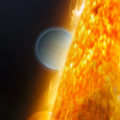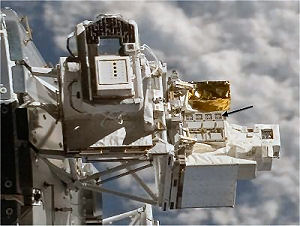
Scientists have detected glycolaldehyde (an organic sugar molecule that is directly linked to the origin of life) 26,000 light years from Earth in a region of our galaxy where habitable planets may exist. The international team of astronomers used the IRAM radio telescope in France (pictured) to detect the molecule and they have reported their findings in Astrophysical Journal Letters.
The team was able to detect glycolaldehyde by using the telescope to observe the region with high-angular resolution and at different wavelengths. The observations confirmed the presence of three lines of glycolaldehyde towards the most central part of the core of the region.
“This is an important discovery as it is the first time glycolaldehyde, a basic sugar, has been detected towards a star-forming region where planets that could potentially harbor life may exist,” said Dr Serena Viti, one of the paper’s authors from University College London.
Related:
DNA Precursors In Meteorite Confirmed As Extraterrestrial
ETs Very Unlikely, New Calculations Suggest
Meteorites Spiced Up Primordial Soup
“Hot” Comets The Source Of Life?


















Comments are closed.